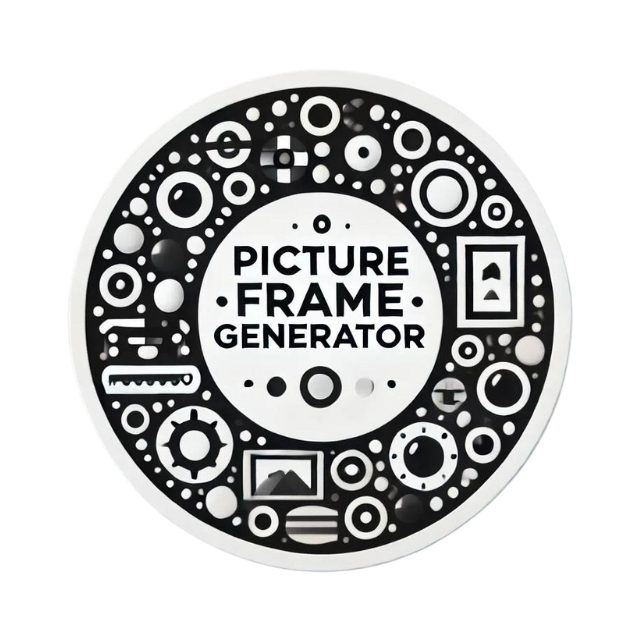Customizing Frames for Digital Art - Adding Depth to Your Pieces
Discover how customizing frames in digital art can transform your pieces, adding depth and dimension. Elevate your creations with strategic framing techniques in the digital realm. Dive into innovative presentation ideas today!

Customizing Frames for Digital Art: Adding Depth to Your Pieces
In the ever-evolving world of digital art, artists continuously seek innovative ways to enhance their creations and captivate their audience. One effective yet often overlooked technique is the strategic use of customized frames. While frames have traditionally been associated with physical artwork, the digital realm offers unique possibilities for artists to customize virtual frames, adding depth and dimension to their pieces.
The Role of Digital Art in the Modern Art Scene
Digital art, a versatile and dynamic medium, has expanded the horizons of creativity. It encompasses various forms, from digital painting to 3D rendering, and allows artists to explore concepts that transcend the limitations of physical media. However, as with any art form, presentation plays a crucial role in how a piece is perceived.
Virtual frames provide an opportunity to enhance digital artworks by giving them a finished and polished appearance. Beyond their aesthetic appeal, frames can serve as tools to create visual depth, drawing the viewer’s eye into the composition and enhancing the artistic narrative.
Exploring the Concept of Custom Frames in Digital Art
Custom frames in digital art differ significantly from traditional frames. Instead of a physical encasement, these are digital additions that artists can incorporate using software. They provide a sense of boundary and completion, often missing in digital displays, while allowing flexibility in style and design that suits the artwork’s theme.
Designing Custom Frames for Your Art
The design process for virtual frames in digital art can be incredibly rewarding. Here are some crucial steps and considerations:
- Understanding the Artwork: The first step is to understand the mood, theme, and style of the artwork. The frame should complement the piece without overpowering it. For example, a minimalist artwork may benefit from a sleek, simple frame, while a bold, vibrant piece might be enhanced by a more intricate design.
- Choosing Colors and Textures: Colors and textures of frames can significantly impact the perception of the artwork. A monochrome palette might bring attention to color-rich art, while textured frames can provide a tangible sense even in digital format, creating an illusion of depth.
- Frame Shapes and Proportions: Experimenting with different shapes and proportions can yield exciting results. A circular frame can add softness to an image, while angular shapes might introduce a sense of tension or dynamism. Make sure the proportions are balanced, focusing on accentuating the artwork instead of distracting from it.
How Custom Frames Add Depth to Artworks
Custom frames can transform digital art, adding layers of meaning and focusing the viewer’s attention. Here’s how they can accomplish these goals:
- Creating a Visual Hierarchy: Frames are excellent tools for guiding viewers through a piece of art. By delineating boundaries and providing contrast, frames help create a visual hierarchy that emphasizes the focal points within an artwork.
- Enhancing Depth and Dimension: Adding shadow effects or slight perspective changes in the frame design can give a digital piece a 3D feel, extending the artwork beyond its flat, digital origins.
- Providing Context and Continuity: A well-designed frame can evoke the piece’s thematic context, resonating with the artwork’s message or story. This can create continuity between the art and its presentation, enriching the overall narrative.

Practical Steps for Digital Artists to Implement Custom Frames
To effectively incorporate custom frames in your digital artwork, consider these practical approaches:
Utilize Design Software
Today’s digital artists have access to a plethora of design software capable of creating custom frames. Programs like Adobe Photoshop, Corel Painter, and Procreate offer powerful tools to craft unique frames. Here's how to leverage these tools:
- Photoshop: Use the shape tools to create the initial frame design, apply textures using layer styles, and experiment with lighting effects to simulate depth.
- Corel Painter: Emphasize painterly textures by using brushes specifically designed for framing.
- Procreate: Its intuitive interface makes it easy to sketch out frame ideas and quickly iterate on designs.
Explore Framing Plugins and Add-ons
Many design platforms support plugins that offer templates and advanced options for frame designs:
- Photoshop Extensions: Extensions like ‘Framespace’ provide a range of customizable frames ready to integrate with digital projects.
- Online Frame Generators: Websites that specialize in digital framing can also be utilized to test out different styles before committing to a design.
Experimentation and Feedback: Enhancing Your Framing Technique
Test Different Styles and Seek Feedback
The key to mastering custom frames lies in experimentation and feedback. As you explore different framing styles:
- Seasoned Eye Tests: Test the artwork with different frames among seasoned digital artists or art communities. Peer feedback will provide insights you might have overlooked.
- Audience Reaction: Pay attention to how audiences react to framed artworks in exhibitions or online platforms. This can inform future framing decisions and help refine your style.
Evolving with Trends
The world of digital art is dynamic, and trends constantly evolve. Stay updated on new framing styles and techniques through online courses, digital art forums, and exhibitions. By keeping abreast of the latest developments, you’ll ensure your work remains fresh and exciting.
Conclusion: Elevating Your Digital Art with Custom Frames
Customizing frames for digital art opens a world of creative possibilities and can significantly enhance the dimensional quality of your work. By thoughtfully designing frames that harmonize with your art, you can create compelling visual experiences that resonate with audiences on a deeper level.
By utilizing advanced design tools and continuously experimenting with new styles, you can master the art of digital framing, transforming your creations into powerful, multi-layered artworks that stand out in the modern art scene.
